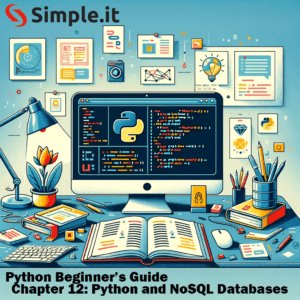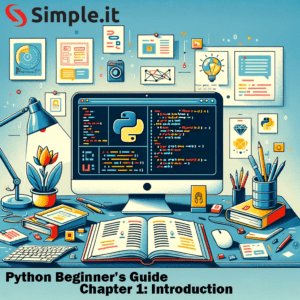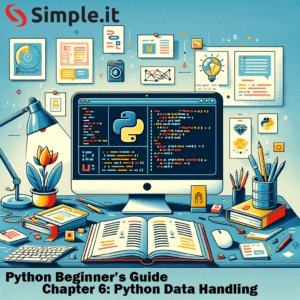Introduction
Welcome to Lesson 4 of our PHP 8 Free Course! As we continue on this enlightening journey, having delved into the power of functions in Lesson 3, it’s time to turn our focus towards two cornerstone data types in PHP: arrays and strings. Arrays are versatile data structures that allow you to store multiple values in a single variable, while strings represent sequences of characters. Mastering the manipulation and handling of arrays and strings is a quintessential step in becoming proficient in PHP. For a recap of previous lessons or to navigate through the course, visit the PHP 8 Free Course index.
PHP 8 Free Course – Lesson 4: Arrays and Strings
Unveiling the Power of Arrays
Arrays are indispensable for managing collections of data. They come in three flavors: indexed arrays, associative arrays, and multidimensional arrays, each serving distinct purposes.
- Creating an Array:
$colors = array("red", "green", "blue");Here, an indexed array named $colors is created, holding three string values.
- Accessing Array Elements:
echo $colors[1]; // Outputs: greenArray indices start at 0, so $colors[1] refers to the second element in the array, which is “green”.
- Associative Arrays:
$ages = array("John" => 25, "Mary" => 30);Associative arrays use named keys instead of numeric indices.
- Accessing Associative Array Elements:
echo $ages['John']; // Outputs: 25By specifying the key name, you can access the corresponding value in an associative array.
Delving Into Strings
Strings are sequences of characters and are among the most used data types in PHP. They are essential for dealing with text and can be manipulated in various ways.
- Creating a String:
$greeting = "Hello, World!";A string is created and assigned to the variable $greeting.
- Accessing String Characters:
echo $greeting[7]; // Outputs: WString characters can be accessed using indices, similar to arrays.
Rich Functionality for Array and String Manipulation
PHP boasts a rich set of functions tailored for array and string manipulation, offering a plethora of options for handling these data types.
- Array Functions:
array_push($colors, "yellow"); // Adds "yellow" to the end of $colors array
$lastColor = array_pop($colors); // Removes and returns the last element from $colors array- String Functions:
$length = strlen($greeting); // Gets the length of $greeting string
$uppercaseGreeting = strtoupper($greeting); // Converts $greeting to uppercaseBridging Arrays and Strings
Converting between arrays and strings is a common task. PHP facilitates this with functions like implode() and explode().
// Convert array to string
$string = implode(", ", $colors);
// Convert string to array
$newArray = explode(", ", $string);These functions allow for seamless conversion between arrays and strings, enhancing the flexibility in data handling.
Conclusion
With a solid understanding of arrays and strings, you are well-equipped to tackle more complex data handling tasks in PHP. Each lesson in this PHP 8 Free Course lays the foundation for the topics ahead, making you more adept in PHP programming.
Ready to continue? March forward to Lesson 5: Object-Oriented Programming to delve into the object-oriented paradigm in PHP. And as always, for a recap of previous lessons or to navigate through the course, visit the PHP 8 Free Course index.
Certainly! Here are some exercises to reinforce the concepts learned in Lesson 4:
Exercises
Array Creation and Manipulation
- Create an indexed array of your five favorite fruits.
- Use a PHP function to add a sixth fruit to the end of the array.
- Print the third fruit in the array to the screen.
Associative Array Practice
- Create an associative array where the keys are names of countries and the values are the capital cities of those countries.
- Print the capital city of one of the countries to the screen.
String Creation and Manipulation
- Create a string that contains a famous quote.
- Use a PHP function to change the case of the entire quote to uppercase.
- Print the length of the string to the screen.
Combining Arrays and Strings
- Take the array of fruits you created in Exercise 1 and convert it to a string where each fruit is separated by a comma and a space.
- Now, convert the string back into an array and print the fourth fruit to the screen.
Advanced Challenge: Multi-dimensional Array
- Create a multi-dimensional array where the first level keys are different sports, and the values are arrays of players’ names associated with those sports.
- Print the name of one player to the screen.
External links
For further mastery of arrays and strings in PHP, various resources are available to deepen your understanding. The official PHP manual provides a comprehensive guide on arrays, and likewise, a detailed documentation on strings. Additionally, W3Schools offers tutorials on arrays, and PHP: The Right Way provides insights on best practices in PHP. TutorialsPoint also hosts a tutorial on PHP strings that can be beneficial. These resources are a treasure trove of information that can aid in your journey through this PHP 8 Free Course.




Pingback: PHP 8 Free Course Index - Simple IT